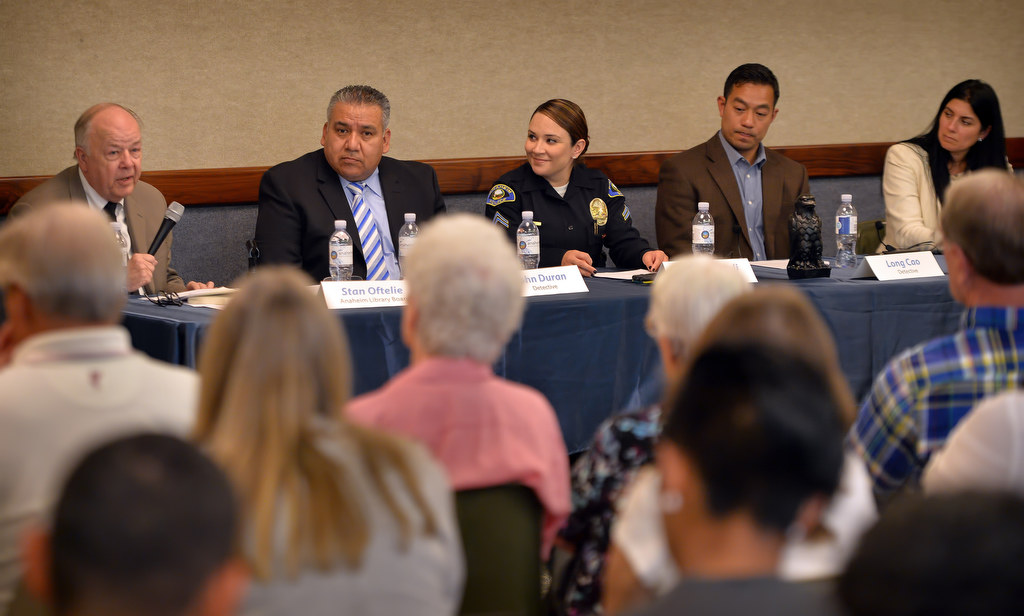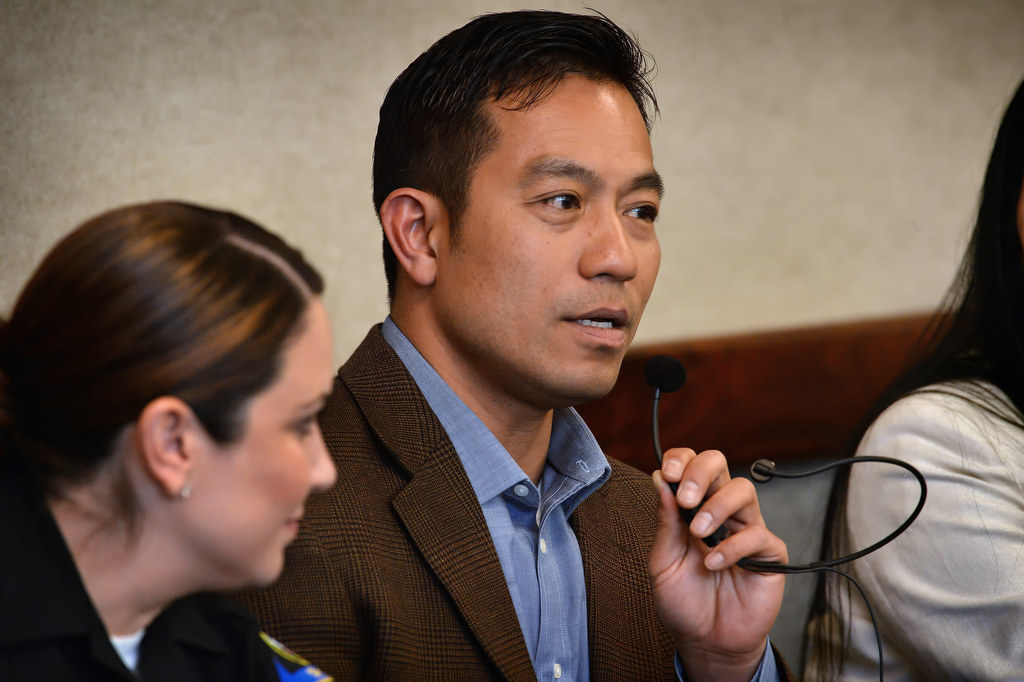“The lieutenant was a compactly built man with a round head under short-cut grizzled hair and a square face behind a short-cut grizzled mustache. A five-dollar gold piece was pinned to his necktie and there was a small elaborate diamond set secret society emblem on his lapel.”
“Does this accurately describe today’s modern police detective?” library board trustee Stan Oftelie asked the panel of Anaheim Police detectives.
Oftelie was reading a description of Lt. Dundy directly from Dashiell Hammett’s 1929 novel “The Maltese Falcon.”
Thus began the final session of the Anaheim Public Library’s “Anaheim Reads” event. It was described as a month-long “One Book One City” program designed to encourage everyone in the City of Anaheim to read.
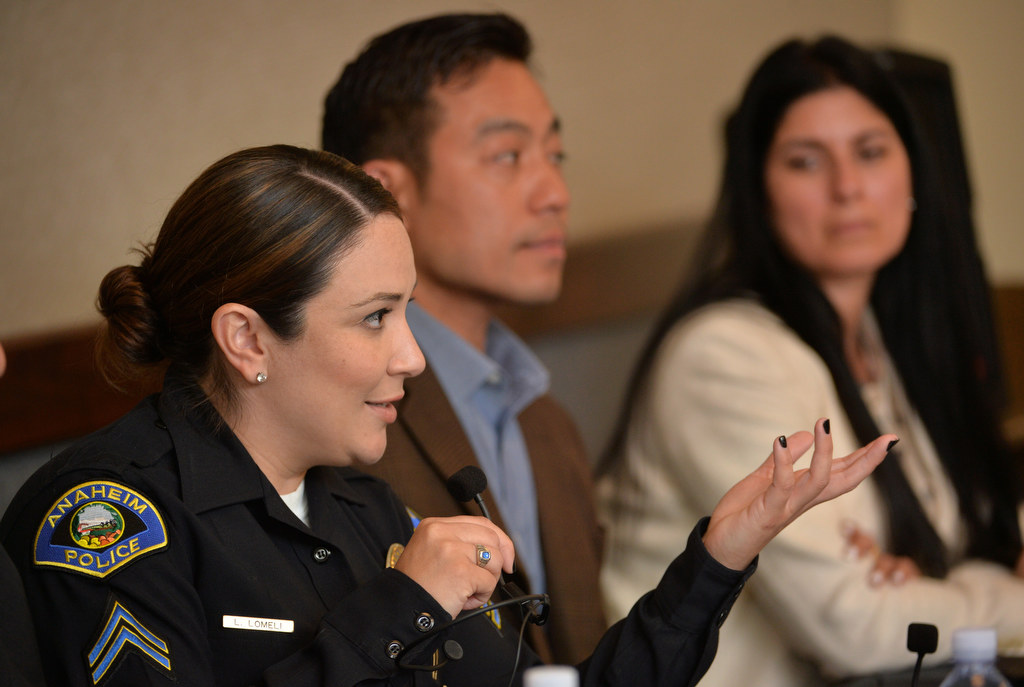
Anaheim PD Det. Laura Lomeli participates in a discussion at the Anaheim Public Library. Behind her is Anaheim PD Det. Long Cao and civilian investigator Mari Aborqui.
Photo by Steven Georges/Behind the Badge OC
The event, on a recent Saturday, was an opportunity to compare the fictional depictions of police work with reality.
Members of the panel panel included Anaheim PD homicide Det. John Duran, sex crimes Det. Laura Lomeli, sex crimes Det. Long Cao and civilian Investigator Mari Aborqui.
Duran took the first shot at answering the question.
“I don’t read many detective novels,” he said. “I get my fill at work. What I do know is people will often misjudge officers because they misinterpret the officer’s need for information as being rude or insensitive.”
Added Lomeli: “Every officer is judged by the one or two experiences a person may have had.”
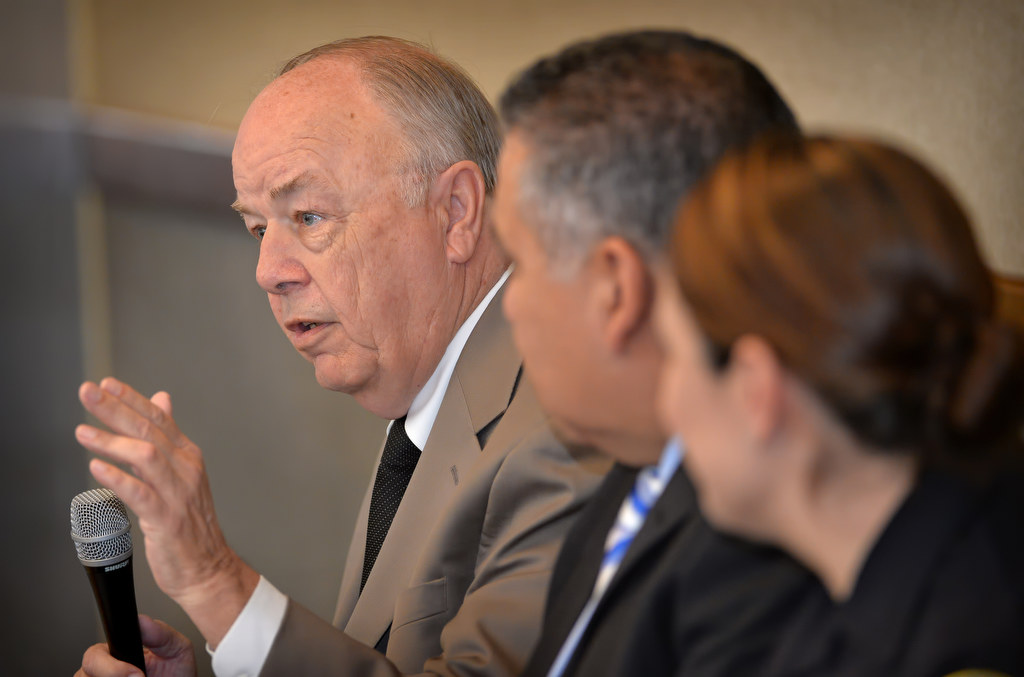
Stan Oftelie, Anaheim Library Board trustee, leads the panel discussion.
Photo by Steven Georges/Behind the Badge OC
Cao chimed in.
“There are a lot of stereotypes of what police officer are like — and even look like,” Cao said. “Even physically, today’s officer is fit, doesn’t smoke and doesn’t eat donuts.”
The questions went back and forth between humorous and serious discussions — even about police use of force.
Asked Oftelie: “At one point Lt. Dundy slaps a suspect. How does this compare to what you do?”
Duran answered: “There is no kind, gentle way to take someone to jail who doesn’t want to go. That being said, there is a lot of emotion when one human being is trying to take another human being to jail who doesn’t want to go. No one gets slapped in the interrogation room. It just doesn’t happen.”
Added Cao: “There are bad apples in every profession. I’ve been an officer for the last 16 years. The overwhelming majority of police officers are hard-working people out there just trying to protect people.”
Said Aborqui: “The use of force is just a tiny sliver of what police officers do every day. Social media makes it seem much bigger than it is. We have to focus on the positive work officers do.”
It went like this for the next few hours, with questions from the moderator and detectives comparing fictional police life to their real-world experiences.
Eventually, the questioning went to the audience.
Of course, it had to be asked.
“Why do police officers like donuts so much?”

Anaheim PD homicide Det. John Duran, left, and sex crimes detectives Laura Lomeli and Long Cao participate in the discussion at the Anaheim Public Library.
Photo by Steven Georges/Behind the Badge OC
Duran answered: “Two reasons. Number one, they taste good. Number two, years ago donut shops were the only places open on graveyard shift. That’s where you met and hung out.”
The event was deemed a success, with more than 90 people in attendance. The audience included high school students, senior citizens and aspiring authors.
This was the first time I’d heard of any city hosting an event quite like this one. It was an opportunity for the public to hear the real world of detectives. It also was an opportunity to dispel some of the media myths about police work.
It’s lots of hard work, technology and intuition that puts criminals in jail. Sometimes it’s just being lucky.
Hopefully there are more opportunities for events like this. Informing the public about the realities of detective work would go a long way at combating the media myths that continue to persist.
Joe is a retired Anaheim Police Department captain. You can reach him at jvargas@behindthebadgeoc.com.
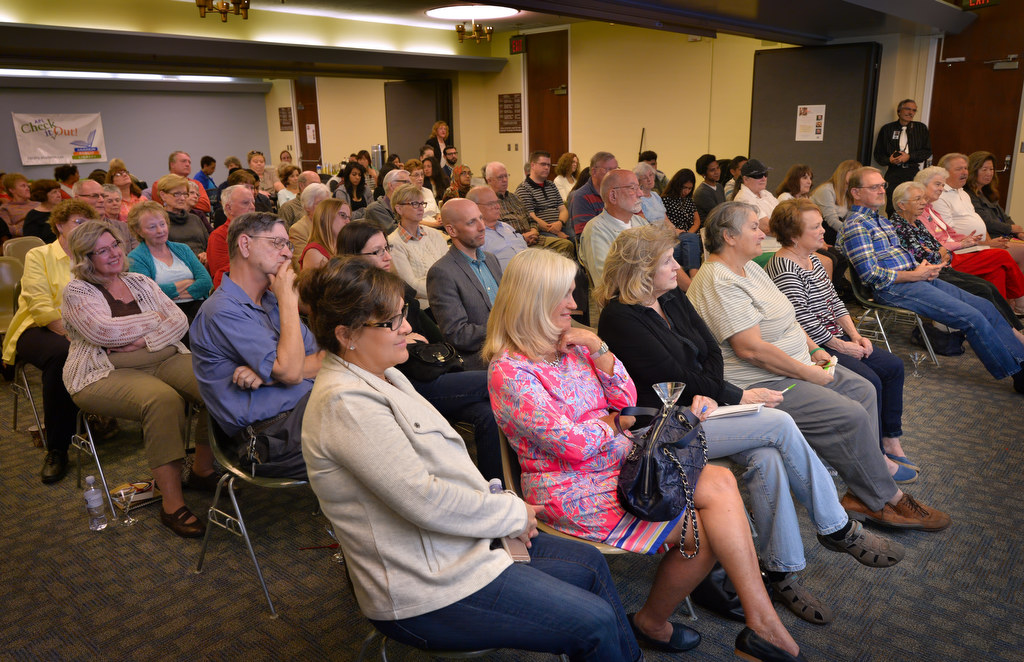
Anaheim Public Library audience members fill the room to listen to Anaheim detectives discuss the book “The Maltese Falcon” and how it relates to real detective work.
Photo by Steven Georges/Behind the Badge OC
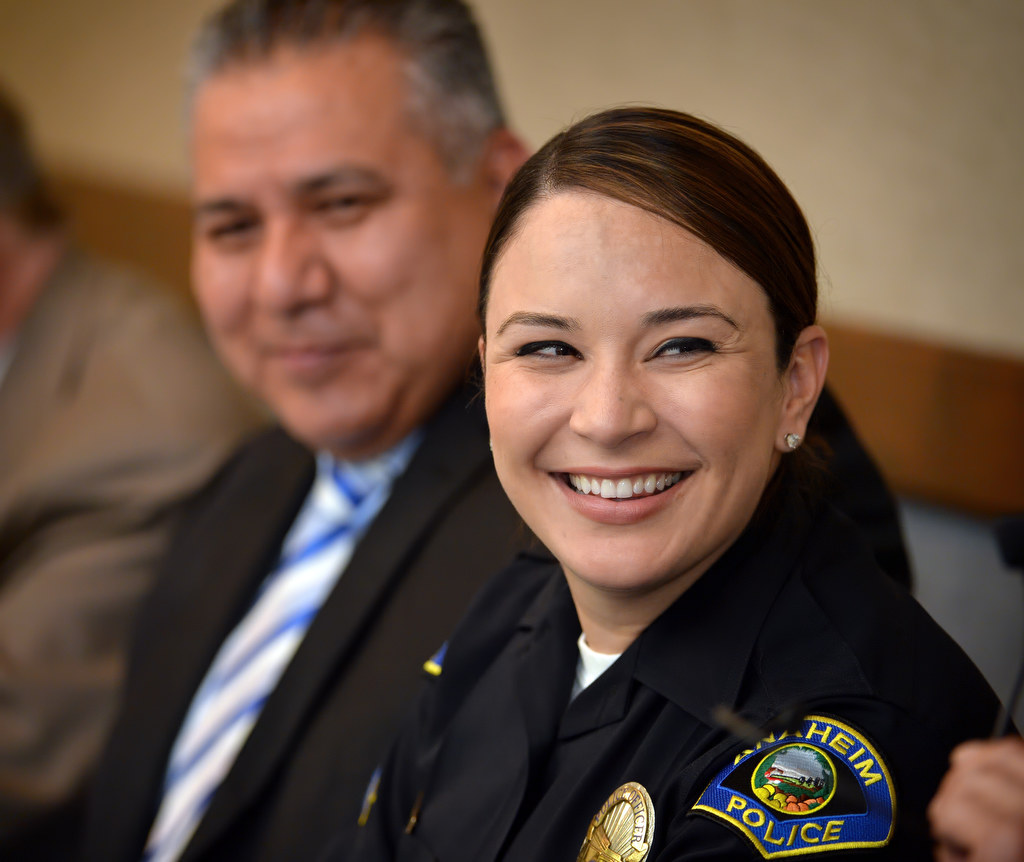
Anaheim PD Det. Laura Lomeli. Behind her is Anaheim PD Det. John Duran.
Photo by Steven Georges/Behind the Badge OC
 Behind the Badge
Behind the Badge

